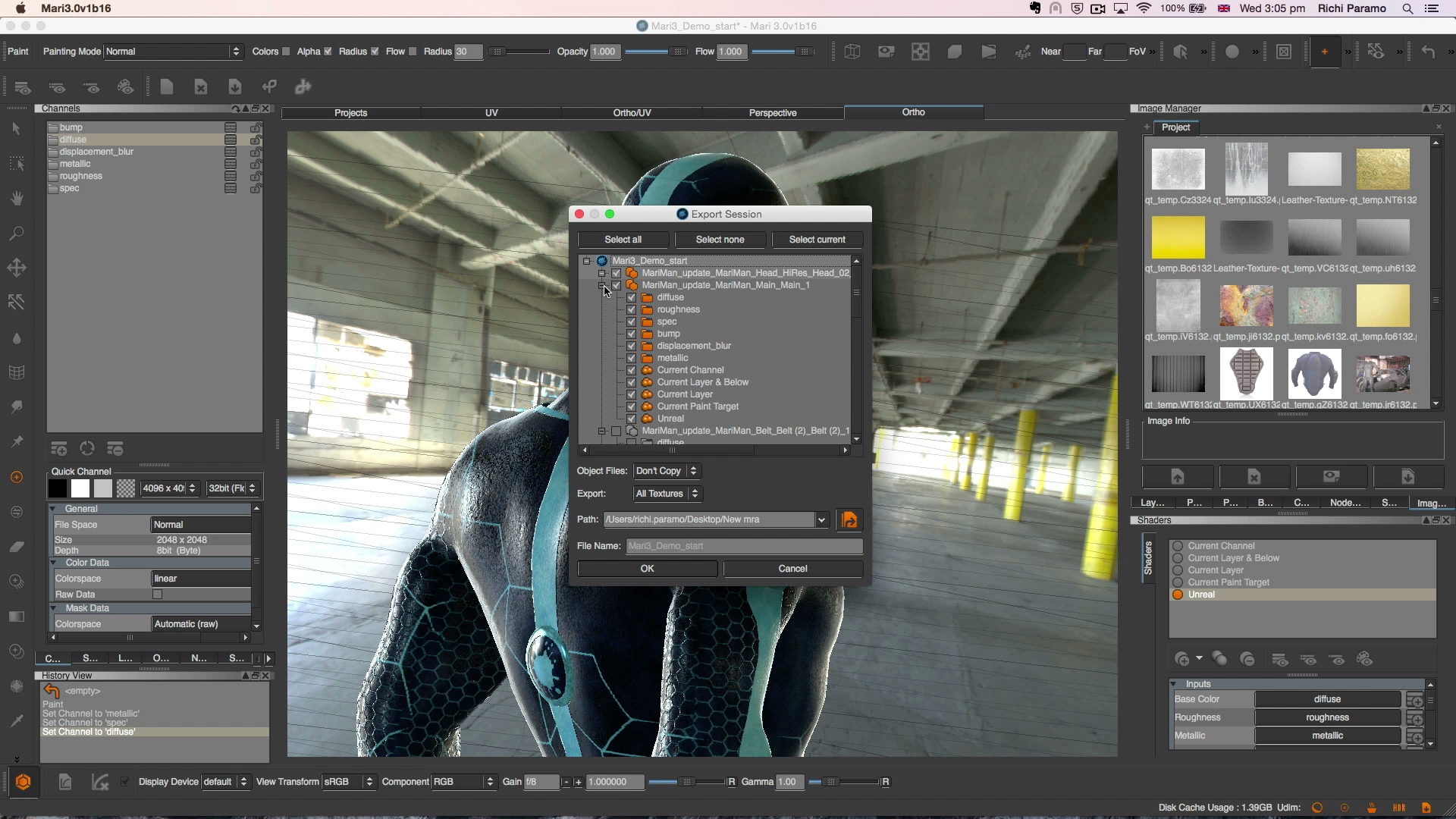Mari 3.0 Release notes

OpenSubdiv support
Support for OpenSubdiv geometry in Mari® lets you work directly with subdivision surface (SDS) meshes. With subdivision surfaces, you can view and work with a more faithful representation of the final rendered smooth surface, and with accurate UV layouts for each level of subdivision.

Modo rendering and baking
Access Modo®’s advanced photorealistic renderer directly within Mari to check the final-render quality of your work as you paint. Plus, use Modo’s powerful baking engine to bake textures from within Mari; create new baking presets in Modo for an extensive range of looks.

Color space management
Flexible, artist-friendly color management workflows offer greater control and let you work with confidence. With color space properties on both images and on individual channels of multi-channel images, there's no need to preprocess or post-process images into the correct color space, saving time and reducing errors.

Arnold, V-Ray, Unreal and Redshift shaders
New shaders designed to simulate those used in industry-standard rendering and games engines—Arnold, V-Ray, Unreal and Redshift—let you paint your textures in their intended final context, providing more realistic previews that reduce the need for time-consuming round-tripping to ensure your textures will work as expected.

Session Scripts
Session Scripts let you create a lightweight archive of a project, keeping all data intact. As well as reducing bloat, Session Scripts can be combined with other archives, letting you see assets in context with other assets, share useful data for reuse, or set up project templates.

Enhanced Texture Transfer
Mari’s Texture Transfer system uses generated point cloud data to transfer textures between two different models. In Mari 3, you can use this data to generate height and normal maps between high and low polygon models, seamlessly blur across patch boundaries, and correctly transfer overlapping UVs.
Mari 3.2 Release notes

Enhanced node graph
Create and edit channels and layers using a powerful, efficient and visual node graph that lets you select and connect nodes directly. Mari®’s node graph now offers a familiar left-to-right layout option, intuitive navigation, configurable shortcuts, zoom-dependent level of detail and many more workflow enhancements.

Bake points
Improve performance by freeing up space on your GPU with new nondestructive bake point nodes. A bake point converts all upstream nodes, including procedurals, to a texture. If the texture becomes out of date as you continue to work, you’ll be alerted and invited to update it.

Connected mesh selection
Easily select an independent island of polygons within a single mesh by extending any face selection to all connected faces; for example, if a pair of eyes have been created as a single mesh, you can now easily select one without selecting the other.

Reduced file sizes for OpenEXR
With OpenEXR 2.2 support, which includes DWA lossy compression, your UDIM texture maps can be much smaller files without noticeable degradation in quality. With some projects requiring hundreds or even thousands of individual textures, the impact on data storage and transfer is significant.
It really is our main workhorse in the texturing department... It's the only package out there that lets you paint on such enormous heaps of geometry without lag. If you're in the Montreal Framestore texture team, 99% of the time, you're on Mari on most shows.
Adam Goldstein, lead texture artist on Blade Runner 2049 at Framestore